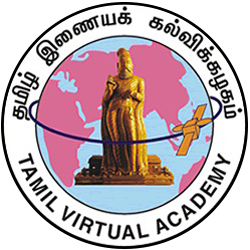Primary tabs
In ancient Tamil nadu, the kings inherited their right to rule. They were regarded as the incarnation of god. The princes were called இளங்கோ or யுவராஜா. The kings were called திரிபுவனசக்கரவர்த்தி. (The ruler of the three words). They had many other such titles. The chola kings trace their genealogy to the sun, the pandyas to the moon and the cheras to the sun and the moon. They prefixed மெய்க்கீர்த்தி to their names. These referred to their victories (e.g) தஞ்சை கொண்ட பரகேசரி. King Rajarajan’s மெய்க்கீர்த்தி began with the words “திருமகள் போல” Even their thrones had names like மழவராயன், காலிங்கராயன் etc. Their flags carried different symbols, for example the chola flag had a tiger. Even some not-so-great kings affixed grand titles to their names.
Usually the first son inherited the kingdom. When a king had no heir, a relative or a suitable person was chosen. The kings performed the coronation for their princes. They in turn, fought for their fathers.
The kings chose their brides from royal families. The queens had the right to share the throne and rule the kingdom.
Many towns were named after queens. The queens built temples and hospitals. The eldest queen was called அக்ரமகாதேவி. The queens had names like அவனி முழுதுடையாள், which means the owner of the whole world. The kings employed officers who were experienced and commited to social welfare. Some of the officers belonged to the royal family. Various duties were assigned to the officers. Some occupied very high positions.
Tamilnadu was divided into மண்டலங்கள், வளநாடுகள் and ஊர்கள். The mandalas and valanadus bore the king’s name (e.g) செயங்கொண்டசோழ மண்டலம். There were nine வளநாடுகள் in chola kingdom. நாடுகள் and கூற்றங்கள் came under வளநாடு. (e.g) நல்லூர் நாடு; வலிவலக்கூற்றம். The pandyan kingdom consisted of seven வளநாடு and 52 நாடுகள். கொங்கு நாடு and பல்லவ நாடுகள் also had many divisions. The ஊர்கள் or towns came under நாடு or கூற்றம்.
The local government bodies of villages towns performed their duties efficiently. As they had many duties to perform, many கழகங்கள் or units were necessary. There were rigorous criteria about who should be members of their bodies; and also who should not be allowed to be a member. The meeting was convened by beating drums and were held usually during the day. They met under trees, in temples or on riverbanks. The secret ballot or குடவோலை was in practice. There was a larger assembly or மண்டலப் பேரவை. consisting of representations from all the local units. Taxes were levied and collected in the form of paddy, gold or money. Concessions were given during famine, flood or failure of harvest.

